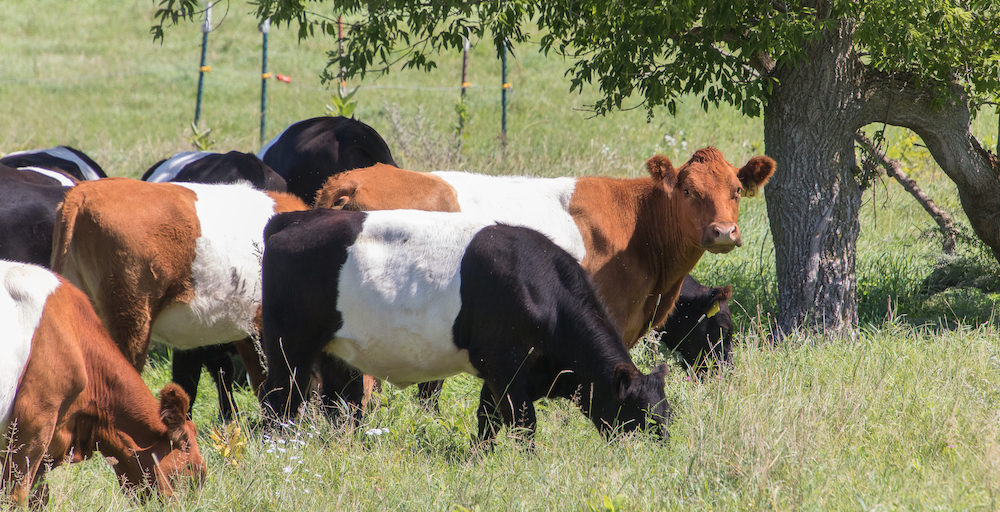Squinting, I picked up my phone to check the time: 5:15AM. Why was I awake? Then I remembered last night’s storm: lightning, rolling thunder and walls of rain driven by high winds – gusts that tore tree branches ripped up my tomato plants.
The little bull calf must have been frightened. He’d been left in the field after I moved the rest of the herd across the driveway and to a fresh paddock. Darn calf. It just wouldn’t stay by its moma. It kept running around me and double-backing to the old field. Crazy kid.
5:15AM. Sunday morning and the cows were mooing like crazy. The unhappy moma bellowed the lead, and the rest of the cows provided boistrous backup.
I pulled on my patched jeans, a tattered black t-shirt and an over-sized white shirt (to keep off bugs), and headed out to find the calf and coax it in with the rest of the herd. Correction: I would try to coax it back to its mom.
(Herding a calf and herding cats have a lot in common.)
Wearing my shin-high Muck boots, I was half-way across the wet field when I noticed a strange white patch moving within a shadowy stand of poplars. It bobbed about five feet above the grass. What was that? The little bull calf only reaches my waist, so it wasn’t him. Not only that, but all my cattle – BueLingos – have either black or red faces.

BueLingo calves
The white patch kept approaching.
I stopped cold. Was that a man in our field? The white patch loomed closer. When it stepped out of the trees, I saw it for what it was – a white-faced Hereford cow. What in the world? Where did this thing come from? And how did it get into our fenced-off field?
As I was mulling this over, I also spotted our errant calf. Both he and the hiefer (young female) were standing across the driveway from the rest of the herd. They were separated by 30 feet of gravel driveway and two lines of electric fence. So all this noise wasn’t just about the calf, it was also about the strange cow.
I yelled at Dave (he was on the deck enjoying a first cup of coffee), to let him know about the visitor left by last night’s storm.
Dave responded with his usual, “What in the world?”

Visiting Hereford heifer
We guessed this young Hereford was spooked by last night’s pyrotechnics, wandered over from the neighboring farm, and found (or made) a breach in our perimeter fence.
We took a breath. Seeing that both the Hereford and our little Buelingo were safe, the first order of business was finding the hole in our fence line.
I searched for an hour before church services. Nothing. Dave and I resumed our inspection after brunch. Nada. Our theory: the heifer is a jumper.
If you’ve never seen it, it’s a sight that stops you in your tracks – a 1000-lb bovine easily clearing a 5-ft fence. Breath-taking.
OK. The heifer is safe. The little bull is safe, if temporarily separated from its dam. Our fence line is intact.
Next step: knock on a few doors and find out if any of our neighbors is missing a heifer wearing an ear-tag marked #1.
It took us just a couple of tries. The worried owner lives just across a main road from our farm. She’d been frantic when she discovered her pretty red heifer missing this morning. Mystery solved, but the issue’s far from resolved.
Getting the Hereford back to her farm may take a bit of time even though her pasture is just 1/4-mile from us. It could take two days or two weeks to have her join with our herd, calmly move through rotational paddock changes, and finally make it back up to our corral. Once in the corral, we would get her into a hauler, and make the minute-long drive back to her home farm.
BREAKING NEWS: Just got a call from the Hereford’s owner. Seems the heifer jumped fences, trotted along the busy county road, turned into her home driveway and jumped back into her own field.
Theory proven. Issue resolved.
Just checked my phone. Storms forecast for Thursday.
Like this:
Like Loading...





















